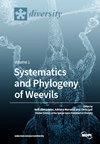Spatiotemporal Patterns in the Distribution of Albacore, Bigeye, Skipjack, and Yellowfin Tuna Species within the Exclusive Economic Zones of Tonga for the Years 2002 to 2018
IF 2.1
3区 生物学
Q2 BIODIVERSITY CONSERVATION
引用次数: 1
Abstract
The Tongan fisheries targeting the species of albacore (Thunnus alalunga), bigeye (Thunnus obesus), skipjack (Katsuwonus pelamis), and yellowfin tuna (Thunnus albacares), comprising the main tuna catch landed, within the EEZ of Tonga is critical to the economy of Tonga. Thus, it is crucial to study the spatiotemporal pattern of their catch and the influence of environmental and physical variables, in addition to the month and year of the catch. To this end, sets of eight generalized additive models were applied to model the distribution of these four species. Selection among competing models was carried out based on k-fold cross-validation, using RMSPE prediction error as a measure of model predictive performance. The following sets of predictors were considered; sea surface temperature, sea surface chlorophyll, bottom depth, month, and year. In addition, to assess the influence of fronts, gradients in SST and Chl-a were computed and used as predictors. Catch year was the most important variable for all, except Albacore tuna, for which month was the important variable. The third most important variable was SST for albacore and bigeye tuna, whereas bottom depth was the most important variable for skipjack and yellowfin tuna. A standardized index of CPUE indicates mostly inter-annual variation in CPUE for albacore and bigeye tuna, whereas a it indicates a general increase in CPUE for skipjack and yellowfin tuna. Hotspots of albacore tuna catches are around the northern and southern edges of the exclusive economic zone and typically during the months of June to August. The bigeye tuna hotspots were concentrated on the eastern side of the islands, in waters overlying trenches; this was most obvious during the months of January to June. Skipjack tuna hotspots were near the edges of the exclusive economic zone, although it is caught in smaller amounts to the three tuna species considered and higher catch rates were observed only after 2014. For yellowfin tuna, the highest catch rates were concentrated around the islands and descending towards the southern edge of the EEZ. As part of the initiative of this study to support national optimal resource management, this study generated standardized CPUE (indices of abundance), an important input in stock assessment, and also looked into the potential influence of environmental and physical variables on the CPUE of these valuable tuna stocks within the EEZ of Tonga.2002 - 2018年汤加专属经济区内长鳍金枪鱼、大眼金枪鱼、鲣鱼和黄鳍金枪鱼分布的时空格局
汤加渔业以长鳍金枪鱼(Thunnus alalunga)、大眼金枪鱼(Thunnus obesus)、鲣鱼(Katsuwonus pelamis)和黄鳍金枪鱼(Thunnus albacares)为目标,构成汤加专属经济区内的主要金枪鱼捕捞量,对汤加的经济至关重要。因此,除了捕捞月份和年份外,研究其捕捞量的时空格局以及环境和物理变量的影响至关重要。为此,采用8个广义加性模型的集合来模拟这4种植物的分布。基于k-fold交叉验证对竞争模型进行选择,使用RMSPE预测误差作为模型预测性能的度量。考虑了以下几组预测因子:海面温度,海面叶绿素,海底深度,月份和年份。此外,为了评估锋面的影响,计算了海温和Chl-a的梯度,并将其作为预测因子。除了长鳍金枪鱼以外,捕捞年份是最重要的变量,月份是最重要的变量。第三个最重要的变量是长鳍金枪鱼和大眼金枪鱼的海温,而海底深度是鲣鱼和黄鳍金枪鱼最重要的变量。一个标准化的CPUE指数主要表明长鳍金枪鱼和大眼金枪鱼的CPUE年际变化,而它表明鲣鱼和黄鳍金枪鱼的CPUE普遍增加。长鳍金枪鱼的捕捞热点位于专属经济区的北部和南部边缘,通常在6月至8月期间。大眼金枪鱼的聚集地集中在岛屿的东侧,在海沟上的水域;这在1月至6月期间最为明显。尽管鲣鱼的捕获量低于上述三种金枪鱼,而且在2014年之后才观察到更高的捕获率,但它们的捕捞热点位于专属经济区的边缘附近。黄鳍金枪鱼的最高捕捞率集中在岛屿周围,并向专属经济区南部边缘下降。作为本研究支持国家最佳资源管理倡议的一部分,本研究编制了标准化的CPUE(丰度指数),这是种群评估的一项重要投入,并研究了环境和物理变量对汤加专属经济区内这些宝贵金枪鱼种群的CPUE的潜在影响。
本文章由计算机程序翻译,如有差异,请以英文原文为准。
求助全文
约1分钟内获得全文
求助全文
来源期刊

Diversity-Basel
Environmental Science-Ecological Modeling
CiteScore
3.40
自引率
12.50%
发文量
925
审稿时长
11 weeks
期刊介绍:
Diversity (ISSN 1424-2818) is an international and interdisciplinary journal of science concerning diversity concept and application, diversity assessment and diversity preservation. It is focused on organismic and molecular diversity. It publishes reviews, regular research papers and short notes in the regular issues. Related news and announcements are also published. Our aim is to encourage scientists to publish their experimental and theoretical results in as much detail as possible. Therefore, there is no restriction on the length of the papers. Full experimental details must be provided so that the results can be reproduced.
 求助内容:
求助内容: 应助结果提醒方式:
应助结果提醒方式:


